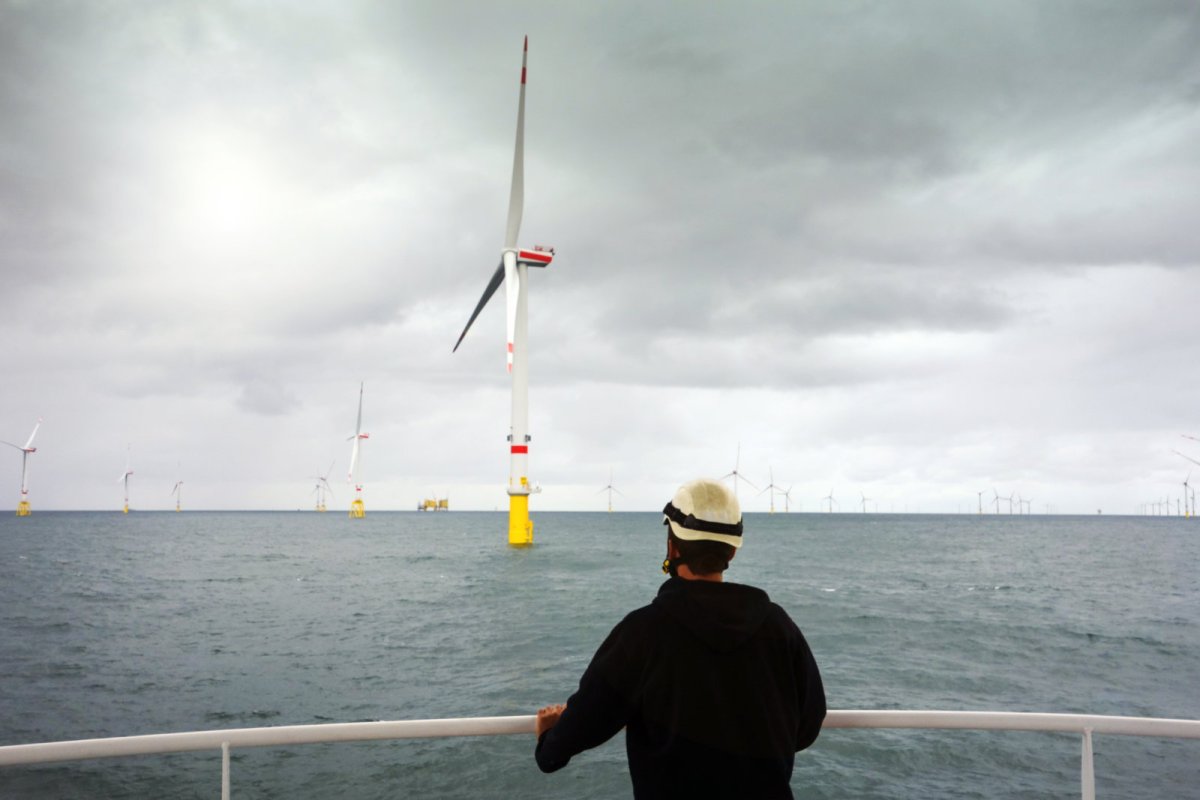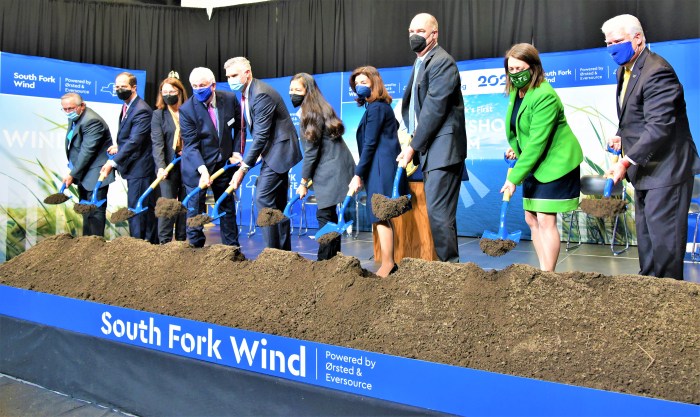“American Revolution,” declared the cover of the Earth Day 2022 edition of Smithsonian magazine. “Block Island: Offshore Wind Drives A Historic Community’s Energy Independence.”
And there is a photo of one of the five wind turbines off Block Island, east of Montauk Point, that is providing all the electricity Block Island needs.
Could offshore wind be a big part of the energy future of Long Island too?
Yes, said Gordian Raacke, executive director of Renewable Energy Long Island. “Long Island will be the epicenter of offshore wind development in the state of New York,” he says.
Next year, the blades of a 12-wind turbine project—South Fork Wind—will begin twirling, providing wind power to the South Fork of Long Island. And that’s just the beginning, says Raacke. With two major stretches of the Atlantic south and east of Long Island being opened by the federal government for wind farms, he anticipates some 750 wind turbines out there in coming years providing electricity for “millions of homes on Long Island and the rest of the state.”
Importantly, he notes, the turbines will be “over the horizon.” Decades back, when offshore wind was first proposed for Long Island, their proximity to the coast was a main reason for opposition.
There’s been opposition by commercial fishing interests to South Fork Wind, but, says Raacke, fishing and offshore wind “can coexist.” He says he has been to Denmark, a pioneer in offshore wind, where “this is exactly what has happened.” And he points to how a reduction in the number of turbines in South Fork Wind by operator Orsted, to provide “wider corridors” for fishing boats to navigate, is an example of that.
A recent overview of “New York State Offshore Wind” put out by the New York State Energy Research and Development Authority, declares: “Offshore wind is ready to power New York.” It says: “Offshore wind is key to achieving New York State’s nation-leading clean energy goals of 70% renewable energy by 2030 and 100% clean electricity by 2040.”
Solar power, too, is a major part of the clean energy mix. The two sources “are complementary,” emphasizes Raacke. “Solar can’t produce power at night but the wind blows at night.”
The article in the April issue of Smithsonian magazine, published by the Smithsonian Institution, begins by telling how Block Islanders had been subject to “the drone of enormous diesel-burning generators, the Rhode Island community’s sole source of power…But then…on the first of May, 2017…the generators, after roaring for 89 years, shut down.”
“Since that day, Block Island has been the only community in the United States fully powered by offshore wind….Over the next several years, the Block Island venture will be joined by many more towns and cities.” The piece, by environmental writer Elizabeth Royte, a Park Slope, Brooklyn resident best known for her book, Garbage Land: On the Secret Trail of Trash and Bottlemania, is accessible online.
I’ve been, by boat, to see the wind turbines off Block Island. They twirl slowly, silently. And what an alternative to the burning of fossil fuels, the major cause of climate change.

































